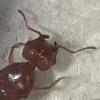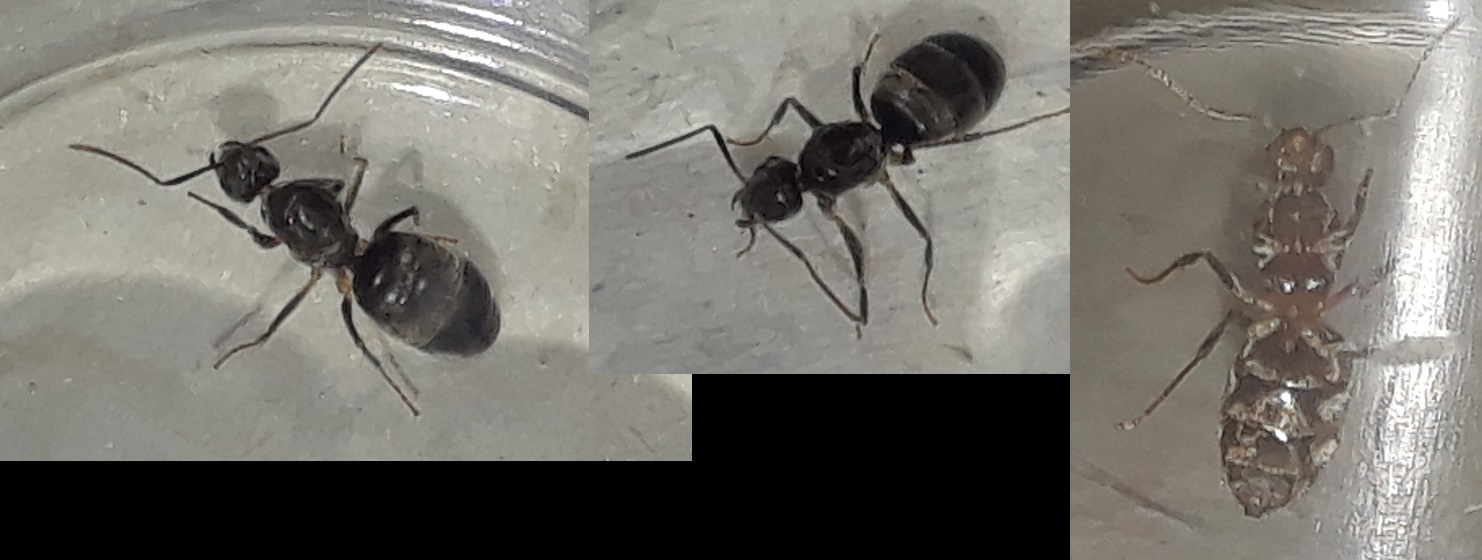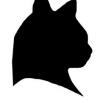Genus: Nylanderia
Species: bourbonica
Common Name:
Colony Stage: Fresh Queen
Caught Date: 06-04-2020
Eggs: 06-08-2020
Larva: 06-28-2020
Pupa: 07-01-2020 (Think I may have seen a fresh pupa, not 100% sure)
Nanitics: 07-09-2020
Diet:
Special Needs:
Do they Sting or bite?:
Escape Artists?:
Queen or colony count: 1 Queen.
06-28-2020:
Saw larva today when I checked on her. She seems to be doing well.
07-01-2020:
So I been informed that she might be a Nylanderia bourbonica instead of a Paratrechina longicornis. Going to wait for workers to be more sure but it seems that it may most likely be the case. I guess more of a reason to be excited to see workers!
07-09-2020:
First workers!
Edit-
Thank you to every single person that tried to help me identify the proper genus and species of these girls! I'd love to find me a Paratrechina longicornis now so I can observe them both in person and more easily see and understand the differences in the future. Maybe one day! But I do really appreciate all your guys help, I still have a lot to learn!
07-31-2020:
Terrible news. As I type this my queen is having some sort of seizure outside of her tube nest. When I first saw it I thought the workers were attacking her so I separated her from them. Observing her for a moment I realized she wasn't being attacked but was having some sort of episode. I figure she is going to die either way so I returned her to her workers and they come and try to get her back to the nest or just walk around her wiggling their antennae at her. Looking closer they definitely aren't attacking her. I'm not sure if this is some sort of genetic disorder or if the little bit of mold in the tube effected her or if she has some sort of parasite. I know it can't be pesticides as I'm overly cautious with what I feed them and most my other species are getting similar foods and no one else has this going on. Can ants get egg bound? Is that a possibility?
Whatever the case I'm pretty upset that I may lose this colony.
08-01-2020:
Checked on them this morning and as I thought the queen has died. I don't know what else I could have done for her or if there was anything I could have done.
Now I have to decide if I should allow the few workers and brood to live the rest of their lives as they are until the colony dies out from age or if I should euthanize them in case they have some internal parasites that could spread to my other ant colonies. I'd hate to do it but I have several other healthy colonies to think about. Any advice from experienced ant keepers? Should I euthanize them or do you think it is safe to let them live out the rest of their lives?
It's funny how an ant dying can be so upsetting! I suppose because it was so sudden. I did not expect this unlike say Beyonce when I knew she likely had a low chance of survival. This queen was fine and had workers and brood.
Anyway, here is a video for those who want to see for themselves what was happening (for the science of it, I suppose). Those of you who are sensitive to even bugs dying you might not want to watch.
Edited by BitT, August 1 2020 - 10:40 AM.
























